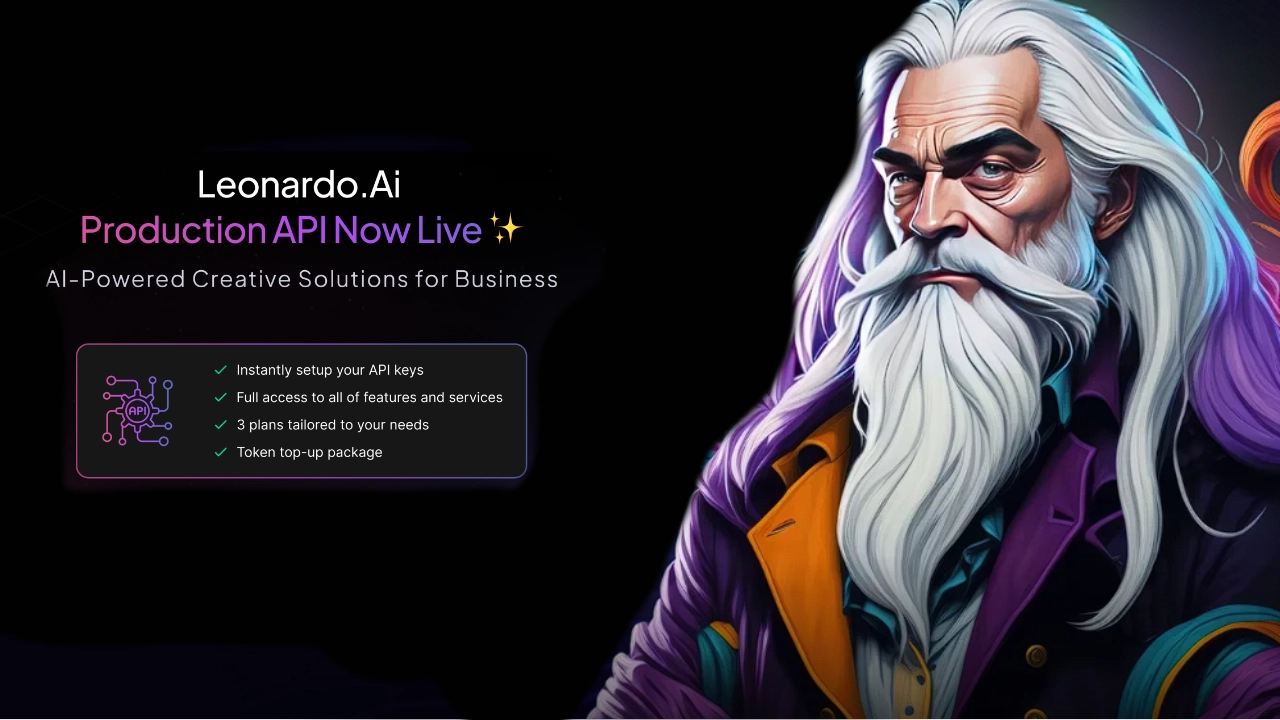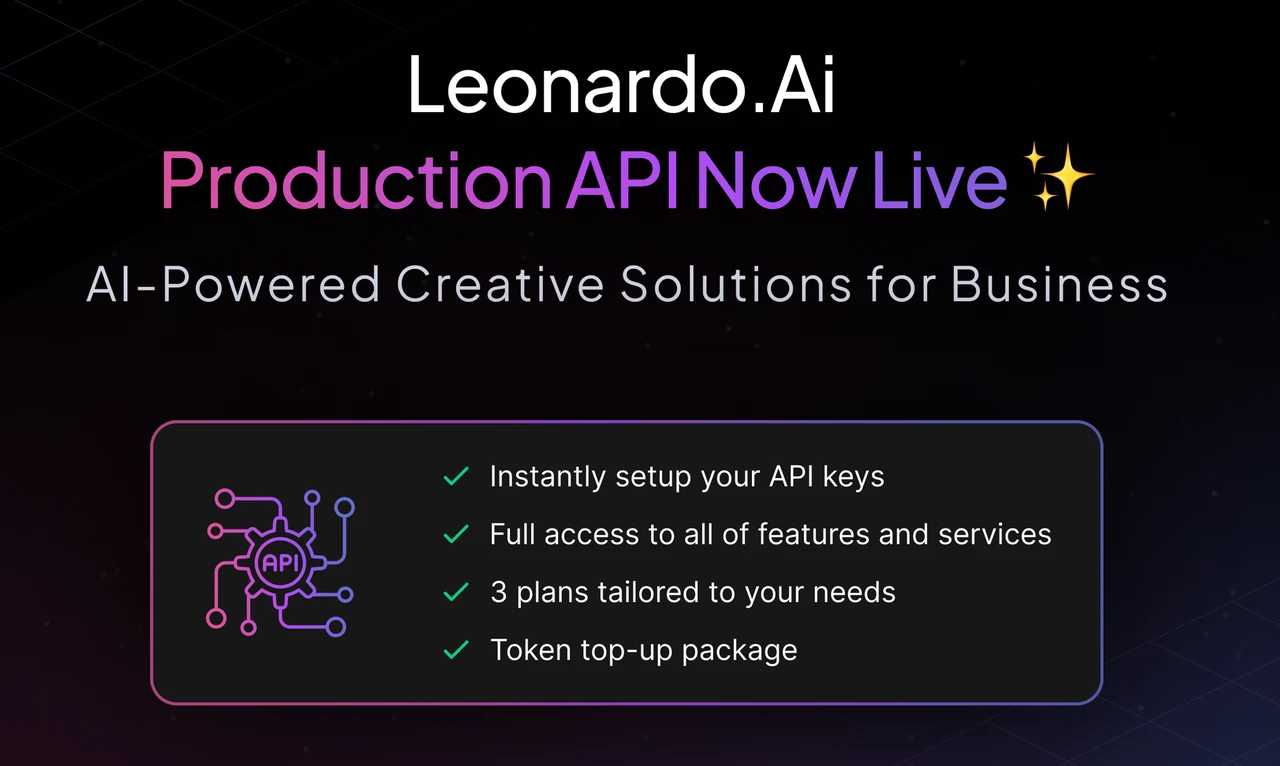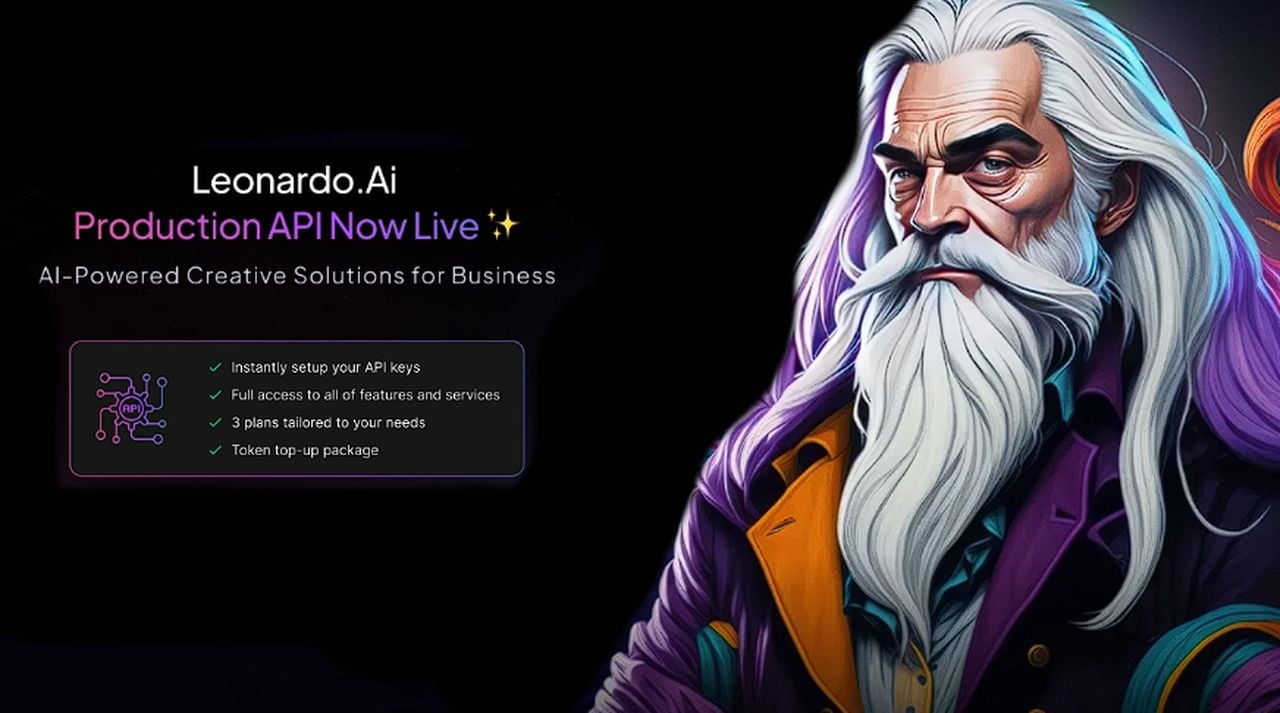
The development team at Leonardo Ai have recently announced the launch of its new Production API. This cutting-edge development now allows both individuals and businesses to integrate the companies AI art generator into their systems and applications. This is a significant step forward in the integration of AI into business workflows and is also availability for personal use. Marking a new era in the fusion of technology and creativity with AI art generators. Whether you’re making a personal project or a service that serves millions of end-users, the Leonardo Ai Production API has you covered, say it’s development team.
Leonardo Ai API Quick Start Guide
Creating an API key for Leonardo.Ai’s platform is a straightforward yet crucial step for anyone looking to harness the power of its Production API
1. Getting Started with Your Leonardo Account
First things first, you need to have a Leonardo account. If you haven’t already, it’s easy to sign up. Just head over to the Leonardo web application. It’s important to note that a subscription to the web app is not necessary for API use. Leonardo offers distinct subscription plans for the API, which we will explore shortly.
2. Choosing Your API Plan
Once you’re logged in, your next step is to navigate to the API Access menu in the Leonardo web app. Here, you will find an option to subscribe to an API plan. Leonardo.Ai presents a range of plans to suit different needs, including API Basic, API Standard, and API Pro. Additionally, for unique requirements, you can contact the team to set up a Custom Plan. Remember, an API plan is different from a web-app plan and is focused on providing access to the Production API.
3. Provisioning Your API Key
After selecting your API plan, you will be directed to the API Access Page. Here’s where the magic begins. You can generate your first API key by clicking the ‘Create New Key’ button. When creating your API key, you’ll need to input a name for the key and, if desired, set up optional webhook callback details. This feature is particularly useful as Leonardo notifies you when image generation is complete, saving you the hassle of constantly checking back.
4. API Best Practices
To ensure optimal management and security:
- Limit the number of API keys you create.
- Develop a naming system for your API keys that reflects the application name, environment, or team, like mywebapp-dev or myiosapp-prod.
- Utilize the webhook callback feature for efficient notification on completed generations.
5. Testing Your API Key
Before diving into development, it’s wise to test your API key. Leonardo.Ai makes this easy. Simply visit the Get User Information page in their API documentation. Here, you can input your key under ‘Bearer’ and click ‘Try It’ to ensure everything is functioning as expected. Setting up and using an API key for Leonardo.Ai’s Production API is a user-friendly process that opens doors to a world of creative possibilities. Whether you’re a seasoned developer or just starting out, Leonardo.Ai’s API offers a versatile and powerful tool for your projects.

Other articles you may find of interest on the subject of Leonardo Ai :
Image Guidance
Another exciting features of Leonardo.Ai’s AI-powered creative process tool is the Image Guidance feature. The company recently introduced an alpha version of this feature, which offers users the option to upload multiple reference images. Users can then select from various options such as depth-to-image and pattern-to-image. This feature is expected to be fully released in the coming days, further enhancing the tool’s capabilities.
Alchemy V2 and Alchemy Refiner
In addition to the Image Guidance feature, Leonardo.Ai has also launched Alchemy V2 and Alchemy Refiner. These tools are designed to transform prompts into complex, high-quality images and refine every detail of the artwork. Alchemy V2 includes three additional SDXL models: Leonardo Diffusion XL, Leonardo Vision XL, and Albedo Base XL. These additional models significantly enhance the tool’s ability to produce stunning, detailed images.
I’m Feeling Lucky
Injecting a dose of creative randomness into the process is the “I’m Feeling Lucky” prompt button. This feature generates new prompt ideas and adds unexpected twists to the creative process. It’s a testament to Leonardo.Ai’s commitment to fostering creativity and innovation in its users.
iOS app
Recognizing the need for mobile accessibility, Leonardo.Ai has released an iOS app. This allows users to use Alchemy V2 and the new XL models on the go, ensuring that creativity is never hampered by location or device constraints.
Canvas Persistent Mode
Finally, the company has introduced the Canvas Persistent Mode. This feature allows users to pick up where they left off in their creative process, as the browser remembers every stroke. This ensures a continuous creative process, allowing users to maintain their flow and momentum.
The launch of Leonardo.Ai’s new Production API and the introduction of these innovative features represent a significant leap forward in the integration of AI into business systems. These developments will undoubtedly revolutionize the creative process, offering businesses a more streamlined, efficient, and innovative way to harness the power of AI. With its commitment to continuous improvement and innovation, Leonardo.Ai is set to remain at the forefront of AI-powered creativity.
Filed Under: Technology News, Top News
Latest timeswonderful Deals
Disclosure: Some of our articles include affiliate links. If you buy something through one of these links, timeswonderful may earn an affiliate commission. Learn about our Disclosure Policy.

